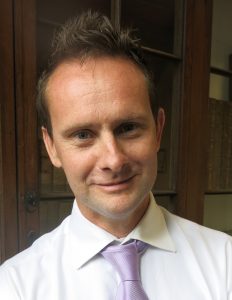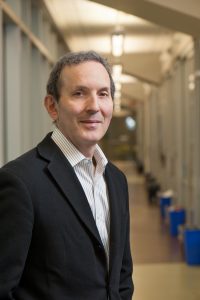As the COVID-19 virus has spread around the world, more and more people are told to work from home. That includes scientists, researchers, lab techs, PhD students, and others who have had to leave the bench behind. Endocrine News reached out to researchers and basic scientists to see how life in their labs has changed, how they have adjusted, and what it means for their future research.
The outbreak of the Coronavirus disease 2019 (COVID-19) pandemic has caused millions of people around the globe to encounter landscapes both at work and home that are dramatically altered. Research institutions are charting new and unfamiliar territory with establishing guidelines that comply with state or federal governments’ executive orders for a crisis that changes weekly — sometimes daily. For institution officials, these are difficult and regrettable decisions.
Many research institutions have determined that in order to protect the health and safety of their communities, only “essential research activities” are allowed to continue during the COVID-19 crisis. Some have deemed essential research as those that include, for example: if the work directly relates to preventing, containing, or treating COVID-19; directly relates to national security; and if discontinuing would result in loss of significant data and samples.
Endocrine News asked several of the leading international endocrine researchers — many of whom are recent Laureate Award winners — about their COVID-19 experience thus far to learn how it’s impacting their valuable work.
Sharing their experiences are Christopher Newgard, PhD, professor in the departments of Medicine and Pharmacology & Cancer Biology at Duke University School of Medicine; Mark Nixon, PhD, University of Edinburgh Centre for Cardiovascular Sciences, U.K.; Laura Alonso, MD, chief of the Division of Endocrinology, Diabetes and Metabolism at Weill Cornell Medicine; Andrea Gore, PhD, professor and Vacek Chair of Pharmacology, University of Texas; Daniel J. Drucker, MD, professor of medicine, Lunenfeld-Tanenbaum Research Institute, Mt. Sinai Hospital, University of Toronto in Ontario, Canada; and editor-in-chief, Endocrine Reviews; Eugene D. Albrecht, PhD, professor, Department of Obstetrics, Gynecology and Reproductive Sciences, University of Maryland School of Medicine, Bressler Research Laboratories, Baltimore, Md.; and Rob Fowkes, BSC, PHD, PGCAP, FHEA, associate dean for Post-Graduate Teaching & Learning, Endocrine Signaling Group, Department of Comparative Bidomedical Sciences, Royal Veterinary College, London, U.K.
“If the impact of COVID-19 continues for many months, this will very likely lead to economic problems in the country, potentially including the NIH budget going forward.” – Eugene D. Albrecht, PhD, Professor, Department of Obstetrics, Gynecology and Reproductive Sciences, University of Maryland School of Medicine, Bressler Research Laboratories, Baltimore, Maryland
Endocrine News: Is your university closed to only essential faculty/staff due to COVID-19? If so, when did the shutdown begin?
Andrea Gore, PhD: Last week, my university announced that our spring break (which was scheduled for this week) would be extended by a week. This would give professors time to switch their courses to online webcasting or making videos, and to figure out alternatives to office hours. After the two-week spring break, courses will begin remotely.
On Friday (Mar 13) the university closed for the day due to two COVID-19 cases in UT personnel. We have since reopened with restrictions. Labs are allowed to do research, but all buildings are locked, only authorized personnel have permission to work, and we have sign-in/sign-out sheets on the lab doors. For my own lab, I asked that only those personnel doing rat work and other ongoing work that is time-dependent to work in lab. Others may work at home. I have also put a moratorium on starting anything new until more normalcy is restored.
Daniel Drucker, MD: As a member of a research institute embedded within an acute care hospital that was a frontline facility for SARS, we have direct experience in preparing for and dealing with worst case unknown viral epidemic scenarios.
Of course, COVID-19 is different, and the plans (in the hospital research institute, city, province, country) change multiple times daily. Our labs are virtually shut down, with staff designated for only emergency maintenance operations, whether that is looking after mice, liquid nitrogen, or related essential services.
Eugene Albrecht, PhD: As of March 14, University of Maryland – Baltimore (UMB) is only open to essential faculty and staff, e.g., clinical staff providing patient care, research faculty, and technicians who take care of and conduct studies on laboratory animals and perform experiments in the laboratory.
Rob Fowkes, BSC, PHD, PGCAP, FHEA: Yes. [March 16] was the date from which everyone was encouraged to work from home. As of yesterday [March 24] only those delivering essential services and patient care are allowed to travel to work. All labs should have shut down last week; I closed mine last week.
Christopher Newgard, PhD: Yes, Duke activated its shutdown of all non-essential research activity on Friday, March 20.
Mark Nixon, PhD: At the minute, and of course this is a fluid process so may and most likely will change, the University of Edinburgh and indeed our research institute remains open. However, we have been advised that only essential work is to be carried out on-site, and if it is possible to work from home then we should. To achieve this, we have stopped planning and implementing new experiments, and are focused on completing those that are currently running. The bigger impact here is on those researchers running clinical trials which have been halted.
Laura Alonso, MD: Yes, Weill Cornell Medicine is currently allowing only faculty and essential staff members to have access to our research laboratories. This policy was disseminated during the week of March 16 and was fully implemented by March 20.
“I’m sad and frustrated for the students who cannot either complete or, in some cases, start their lab projects.” – Rob Fowkes, BSC, PHD, PGCAP, FHEA, Associate Dean for Post-Graduate Teaching & Learning, Endocrine Signalling Group, Department of Comparative Bidomedical Sciences, Royal Veterinary College, London, U.K.
EN: How many researchers in your laboratory are affected by the shutdown?
Gore: Right now, we have 12 people in my lab. Because it is spring break most of the undergraduates are home. Of the rest of the researchers, most are working on a modified schedule.
Drucker: As a mouse-focused laboratory, we have had to curtail and terminate many ongoing projects, losing valuable time, and precious animals, thereby severely delaying the progress of our research. This is most difficult for our trainees, whose immediate future critically depends on generating results, finishing projects and papers, etc. However even senior scientists are painfully affected by a sudden shut down in ongoing research, which has been put into effect within the last few days. We have a lab of about 10 persons, and perhaps three are now designated to be essential, permitting them to maintain and finish some concluding experiments but certainly all non-urgent ongoing and all new studies were prematurely terminated. We can analyze data and write some papers and grants off site, but as a “wet lab,” 95% of what we do happens with animals and assays at the bench, so remote work does not really help us meaningfully.
Albrecht: Six of the individuals involved with my research program have been affected by the UMB/UMMS COVID-19 response.
Fowkes: One PhD student, one MSc student, four undergraduate project students (final year dissertations), and three incoming final year veterinary students for their dissertation projects. NONE of them will complete/start their intended projects.
Newgard: There are about 160 total staff at our Duke Molecular Physiology Institute (DMPI), of which about 80% are researchers (faculty, fellows, students, and technical staff). All admin staff are now working remotely. On the research side, we are still working out plans for continuing a few essential activities, with an anticipation of engaging no more than 15 people who will work in shifts to avoid contact.

“Our biggest concerns are naturally around the impact that “shutting down” will have on our research and funding positions. Being unable to set up new experiments and possibly having to re-establish mouse colonies, etc., once this has passed will eat into grant times and costs, meaning a delay in publications and an inability to apply for future grants.” – Mark Nixon, PhD, University of Edinburgh Centre for Cardiovascular Sciences, U.K.
Alonso: All researchers in my laboratory are profoundly affected by this shutdown. One example is of an Assistant Professor working closely with me has had to stop experiments he needs to finish the data sets for two papers. My laboratory moved last fall, and we had only just successfully re-expanded our mouse colonies to the point where we could set up some of his important in vivo experiments. These experiments are now on hold indefinitely.
“Huge concerns about loss of momentum, the chaos involved in getting back to ‘normal,’ disruption of funding, and the possibility of future outbreaks as are now occurring in Hong Kong.” – Christopher Newgard, PhD, professor in the departments of Medicine and Pharmacology & Cancer Biology at Duke University School of Medicine, Durham, N.C.
EN: Have you had to devise a plan for onsite and remote work for your team? If so, what does the plan entail? How are you communicating with your team members who are now remote?
Gore: I am in daily or even more frequent communication (via email) with everyone in my lab. Everyone’s situation is different, and the rules keep getting updated by the university, so I have literally spent about five to six hours a day since Friday (March 13) just in communications.
Drucker: We communicate with email, phone, Zoom, the usual electronic resources.
Albrecht: We have a nonhuman primate colony of baboons at the UMB that requires daily experimental treatments (e.g., hormone administration), blood draws, fetal and placental ultrasound imaging, and cesarean section for delivery of the fetus and placenta at different stages of pregnancy. The research staff responsible for this work are considered essential and thus are permitted by UMB to enter the campus and conduct this work. Since this research also involves tissue collection and various time-dependent analyses, faculty and technicians are permitted on campus in the laboratory but must apply the six-foot social distancing rule to perform this work. Non-essential staff, e.g., administrative assistants, financial, procurement, and grant administrative staff, are required to stay at home and I communicate with them via the internet/teleworking.
Fowkes: We have setup Microsoft Teams and Whatsapp groups for basic discussions and a journal club. Most of the student support can now be done by email, as their work is transitioning to writing, so I am marking draft versions of theses etc.
“Most importantly, I am concerned for the health and safety of all of our Division members, especially those working at the front lines of this crisis, and their loved ones.” – Laura Alonso, MD, chief of the Division of Endocrinology, Diabetes and Metabolism at Weill Cornell Medicine, New York, N.Y.
EN: Leaders across the country are coping with the challenges of staying connected with staff who are working from home, perhaps for the first time in their careers. Do you have any strategies in mind?
Gore: My team members are already used to communicating by email, Skype, etc. It’s more challenging to have meetings but we are undertaking to use some programs such as Zoom or WebEx for lab and committee meetings.
Drucker: A major challenge is morale. Older full-time scientists are disrupted, but there is less emotional and career impact, for obvious reasons. If you are a trainee, the uncertainty, disruption, anxiety and subsequent stress, for many reasons, is understandably greatly magnified.
Albrecht: The above policies are essential to limit the number of people in this country infected by COVID-19 and I fully support the responses taken by UMB and the federal and state governments. Of course, these steps have created problems with conducting the laboratory animal and experimental studies, e.g., procuring supplies, conducting collaborative studies with scientists external to our institution, coordination of the teleworking related to submission of research papers for publication, etc. At this point I do not have other strategies in mind to limit the challenges.
Fowkes: Get some fresh air when you can. We are still allowed to go out and exercise once a day – I’ve been running with my 16-year-old son (I run, he tuts at how slow I am).
Newgard: It appears that essentially all of our staff is able to connect to Duke email, and our IT staff should be commended for making sure that everyone has VPN linkage.
Alonso: Staying connected is a big challenge. The strategy my laboratory is using is to maintain at least once-weekly in-person updates via Zoom, plus many emails.
“Once we get through this, we need to take all reasonable measures to help the trainees and colleagues most affected bounce back. Hopefully, one enduring consequence of COVID-19 will be a greater respect for the importance of funding science in our global societies.” – Daniel J. Drucker, MD, professor of medicine, Lunenfeld-Tanenbaum Research Institute, Mt. Sinai Hospital, University of Toronto in Ontario, Canada; editor-in-chief, Endocrine Reviews
EN: What are your chief concerns about how COVID-19 will impact your laboratory and future work?
Gore: Of course, I’m most concerned about the health of my personnel.
A big concern is that we have received notification that our animal facilities may halt the ordering of any new animals. If that happens, we cannot start the next round of experiments (scheduled to begin later in March). Our studies are longitudinal, and an extended delay pushes us back by months. The uncertainty of this, along with uncertainty of the trajectory of the virus, is creating anxiety for my personnel – for example, graduate students trying to finish up.
On a personal note, I take an immunosuppressive medication, putting me in a very high-risk category for COVID-19 and keeping me home. That is very frustrating to me as a PI of a lab, where I cannot be there to assist during this time when we are short-handed.
Drucker: We will suffer large financial setbacks in terms of wasted resources, major delays to projects, lost opportunities, delays to career progression.
However, maintaining perspective is critical. We, society, and the healthcare institutions, are at war with a deadly, poorly understood enemy. There are many causalities of war. My greatest respect and daily thoughts are allocated to our brave frontline healthcare workers who are battling COVID-19 daily, on our collective behalf. Once we get through this, we need to take all reasonable measures to help the trainees and colleagues most affected bounce back. Hopefully, one enduring consequence of COVID-19 will be a greater respect for the importance of funding science in our global societies.

“Our studies are longitudinal, and an extended delay pushes us back by months. The uncertainty of this, along with uncertainty of the trajectory of the virus, is creating anxiety for my personnel – for example, graduate students trying to finish up.” – Andrea Gore, PhD, Professor and Vacek Chair of Pharmacology, University of Texas, Austin, Texas
Albrecht: If the impact of COVID-19 continues for many months, this will very likely lead to economic problems in the country, potentially including the NIH budget going forward. If this occurs, I believe that the universities and the NIH should (1) reduce the overhead/indirect costs associated with research grants by decreasing the number of university administrative personnel and money spent on activities not directly benefiting the research; (2) limit the costly large multi-investigatory program project type research grants and focus on the individual R01-type research grants; and (3) expand use of the live tele-meeting option to maintain annual scientific society meetings, research grant review.
Fowkes: I’m sad and frustrated for the students who cannot either complete or, in some cases, start their lab projects. We’ve also cancelled our incoming Study Abroad cohort of 20 U.S. College students, who normally work in our labs in the summer. Personally, I’m not as affected, as I was having to think about relocating my lab later this year, so I would have had to start thinking about shutting down at some point.
Newgard: Huge concerns about loss of momentum, the chaos involved in getting back to “normal,” disruption of funding, and the possibility of future outbreaks as are now occurring in Hong Kong.
Nixon: Our biggest concerns are naturally around the impact that “shutting down” will have on our research and funding positions. Being unable to set up new experiments and possibly having to re-establish mouse colonies, etc., once this has passed will eat into grant times and costs, meaning a delay in publications and an inability to apply for future grants. Given the short-term nature of academic researchers’ contracts, this will be a challenging and difficult time for us, and indeed for everyone!
Alonso: I am very concerned about the long-term impact of COVID-19 on my laboratory and research output of the Division. Although some scientists are now able to submit research papers they didn’t have time to get to before, since I am leading a clinical division in a busy hospital I have had no time at all to work on science. I worry about productivity lapses on my NIH grants and subcontracts. Although NIH grant duration can be extended, the amount awarded is not increased. Weak grant productivity will impact my ability to successfully renew my current grants or apply for new ones. I’m concerned for my students and postdocs, and the impact that delaying their research might have. Finally, and most importantly, I am concerned for the health and safety of all of our Division members, especially those working at the front lines of this crisis, and their loved ones.
Shaw is a freelance writer based in Carmel, Ind., and a regular and frequent contributor to Endocrine News. She wrote about the Endocrine Society’s 25 years of diversity activities in the March issue.
Additional reporting by Endocrine News editor Mark A. Newman and senior editor Derek Bagley.

 “I’m sad and frustrated for the students who cannot either complete or, in some cases, start their lab projects.” – Rob Fowkes, BSC, PHD, PGCAP, FHEA, Associate Dean for Post-Graduate Teaching & Learning, Endocrine Signalling Group, Department of Comparative Bidomedical Sciences, Royal Veterinary College, London, U.K.
“I’m sad and frustrated for the students who cannot either complete or, in some cases, start their lab projects.” – Rob Fowkes, BSC, PHD, PGCAP, FHEA, Associate Dean for Post-Graduate Teaching & Learning, Endocrine Signalling Group, Department of Comparative Bidomedical Sciences, Royal Veterinary College, London, U.K.
 “Most importantly, I am concerned for the health and safety of all of our Division members, especially those working at the front lines of this crisis, and their loved ones.” – Laura Alonso, MD, chief of the Division of Endocrinology, Diabetes and Metabolism at Weill Cornell Medicine, New York, N.Y.
“Most importantly, I am concerned for the health and safety of all of our Division members, especially those working at the front lines of this crisis, and their loved ones.” – Laura Alonso, MD, chief of the Division of Endocrinology, Diabetes and Metabolism at Weill Cornell Medicine, New York, N.Y. “Once we get through this, we need to take all reasonable measures to help the trainees and colleagues most affected bounce back. Hopefully, one enduring consequence of COVID-19 will be a greater respect for the importance of funding science in our global societies.” – Daniel J. Drucker, MD, professor of medicine, Lunenfeld-Tanenbaum Research Institute, Mt. Sinai Hospital, University of Toronto in Ontario, Canada; editor-in-chief, Endocrine Reviews
“Once we get through this, we need to take all reasonable measures to help the trainees and colleagues most affected bounce back. Hopefully, one enduring consequence of COVID-19 will be a greater respect for the importance of funding science in our global societies.” – Daniel J. Drucker, MD, professor of medicine, Lunenfeld-Tanenbaum Research Institute, Mt. Sinai Hospital, University of Toronto in Ontario, Canada; editor-in-chief, Endocrine Reviews